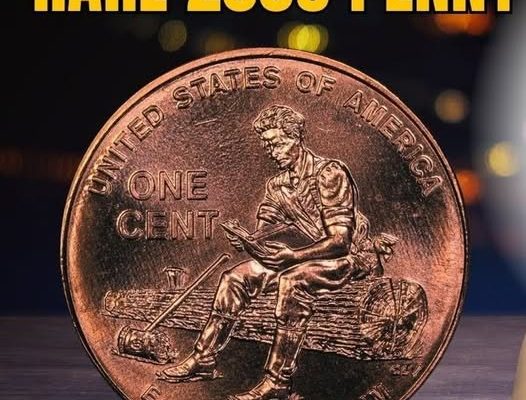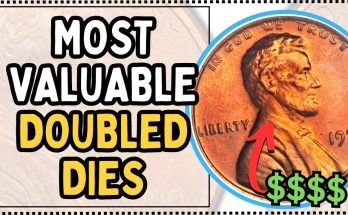“This 2009 Lincoln Penny Could Make You Rich Collectors Are Going Crazy!”
This small piece of copper-plated zinc is no ordinary coin; it is the 2009 Lincoln Bicentennial Cent, and specific varieties are commanding prices from hundreds to thousands of dollars at auction. The collector frenzy surrounding this cent is rooted in a perfect storm of commemorative significance, limited production, and elusive mint errors.
The year 2009 marked two profound milestones in American coinage and history: the 200th anniversary of Abraham Lincoln’s birth and the 100th anniversary of the Lincoln cent. To honor this dual bicentennial and centennial, the U.S. Mint authorized a special series of four different reverse designs for the penny, each one illustrating a key phase of Lincoln’s remarkable life. These designs replaced the iconic Lincoln Memorial reverse used since 1959:
- Birth and Early Childhood in Kentucky: Depicting a simple log cabin.
- Formative Years in Indiana: Showing a young, studious Lincoln taking a break from rail-splitting to read a book.
- Professional Life in Illinois: Featuring Lincoln standing before the Old Illinois State Capitol.
- Presidency in Washington, D.C.: Illustrating the partially constructed dome of the U.S. Capitol Building.
While billions of these coins were minted for circulation, the unique circumstances of 2009—namely the economic recession—meant that many pennies were not released or were quickly hoarded by the public, paradoxically making it harder to find high-quality specimens in pocket change today. The vast majority of circulated 2009 cents are still worth face value, but it is the rare, “museum-quality” examples and those with crucial errors that transform a one-cent coin into a potential fortune.
The factors that can elevate a 2009 penny’s value into the rich category are threefold: Grade, Rarity, and Error.
Condition and Grade: The most significant factor is the coin’s condition, as determined by professional grading on the Sheldon scale of 1 to 70. A penny must be in virtually perfect, uncirculated condition (Mint State, or MS-65 and above) to achieve a high value. For instance, certain designs graded as MS-67 (a very high, near-perfect grade) can be valued from $150 to over $300. The peak of this value is seen in truly exceptional pieces; for example, a 2009-D “Formative Years” cent graded MS69 Red—one of the highest grades attainable—recently sold for an astonishing $2,400 at auction, proving that condition is king.
Mint Errors and Varieties: The greatest potential for wealth lies in mint errors. These are mistakes made during the manufacturing process that make the coin unique and highly desirable to collectors. The most famous and valuable error in this series is the “Doubled Die Reverse” variety found on the “Formative Years” design. This error features noticeable doubling, particularly on the fingers or thumb of the young Lincoln’s hand as he reads. While many errors exist, authenticated, dramatic doubled dies—though varying widely in price—are what collectors are “going crazy” to find, with some error varieties commanding hundreds of dollars or more.
Rarity and Mint Mark: The coins were struck at the Philadelphia (no mint mark), Denver (‘D’), and San Francisco (‘S’) Mints. While Philadelphia and Denver coins were for general circulation, the ‘S’ mint mark pennies were exclusively reserved for special-issue Proof and Satin Finish collector sets, making their production much lower and their value inherently higher, especially in top condition.
The potential for a high-value 2009 Lincoln penny means it is wise to stop simply spending them. Check your change, examine the condition, and use a magnifying glass to search for mint errors. A hidden fortune could be sitting in your pocket, waiting to be authenticated by a major grading service before it transforms into a significant payday. This is more than a one-cent coin; it’s a tiny piece of history with a giant price tag for the lucky and observant collector.



